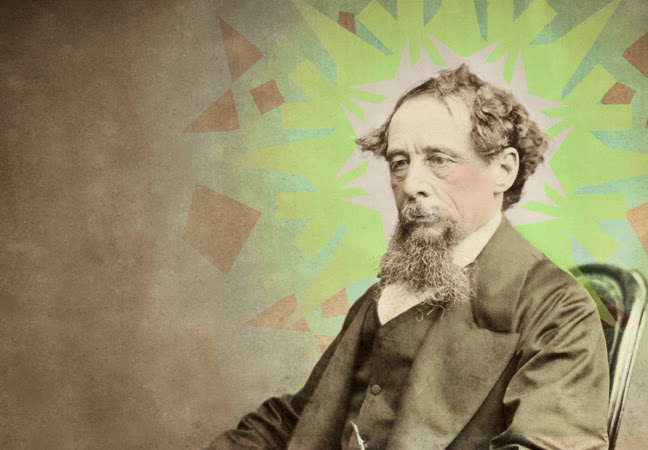The Man Who Invented Christmas (with a Little Help)
By Michael Paller
 |
Charles Dickens, circa 1860s.
Heritage Auction Gallery
|
Imagine a Christmas without carols
or cards. No festive dinner. No presents under the tree on Christmas morning. No
tree. No day off to spend with the family. This was Christmas in most places
before
A Christmas Carol was
published on December 19, 1843. Charles Dickens has been called “the man who
invented Christmas,” and while that’s an exaggeration, it’s only a slight one.
He didn’t invent the modern holiday by himself, but for many people, his vision
of Christmas
is Christmas.
Christmas
was grim in England’s cities during the Industrial Revolution. Factories and
businesses were open on December 25, and there was no day off for employees like
Martha Cratchit. Still, while Christmas wasn’t much celebrated in London or
other large cities, some of the old customs were observed in remote rural villages.
 |
"The Spirit of Christmas Present."
From Dickens's A Christmas Carol,
illustrated by Soy Eytinge.
Boston: Ticknor and Fields, 1869.
Courtesy the British Library
|
When Dickens was 12, his father was declared a
bankrupt. He and the entire family except for Charles were imprisoned for debt.
The boy, suddenly alone in the world, was removed from school and put to work.
It was the formative experience of his life. It’s not surprising, then, that in
a series of pieces beginning in 1835 with an essay called “Christmas Festivities,”
Dickens depicted a holiday centered on families, especially children who were
loved, cared for, and surrounded by warmth and good cheer. Dickens eventually
produced five short books and numerous articles on Christmas themes, but
A Christmas Carol has always been far
and away the most popular, and the most successful in setting out what he came
to call his “
Carol philosophy.”
 |
"A Retrospect."
From Dickens's A Christmas Carol,
illustrated by Soy Eytinge.
Boston: Ticknor and Fields, 1869.
Courtesy the British Library
|
First stated in “Christmas Festivities,” the
philosophy is an earthly one, concerned with the welfare of all in the here and
now, however much it might find echoes in religious texts: “And thus the evening passes, in . . . good-will
and cheerfulness, doing more to awaken the sympathies of every member of the
party on behalf of his neighbor, and to perpetuate their good feeling during
the ensuing year, then all the homilies that have ever been written, by all the
Divines that have ever lived.”
It’s a sad irony that the profit-driven atmosphere
of the early nineteenth century, which led Dickens to write
Carol, has infected the holiday in our
own time. Still,
Carol is an antidote
to what a contemporary critic referred to as “this money-seeking age and
money-getting country.” Dickens’s vision of Christmas isn’t about money; it doesn’t
divide rich from poor. It encompasses all, child and adult, fortunate and
unfortunate, the loved and the orphaned. It’s summed up in a sentence that, if
it’s accumulated sentimental baggage in the ensuing 169 years, is still
revolutionary in its plea that the bounty of life be shared among all: “God
bless us
every one!”




